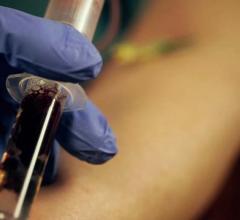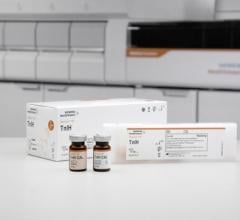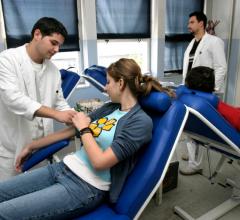
March 1, 2017 — Up to 40 percent of emergency room (ER) patients with chest pain can safely go home in a little under 2 hours, using a highly sensitive, newly U.S. Food and Drug Administration (FDA)-approved blood test and a heart health scoring system. These findings were drawn from an international study led by Henry Ford Health System.
That is good news for 8 to 10 million Americans seen for chest pain each year in emergency rooms, said Henry Ford cardiologist James McCord, M.D. Studies show a heart attack is ruled out for about 85 percent of those patients.
“People can appreciate if you’re in the ER for two hours versus 30 hours — that’s a big deal,” said McCord, estimating that about 40 percent — or approximately 3.5 million patients — who pass the testing could go home quickly. “The patients not only have a heart attack ruled out, they represent a low-risk group of patients who can go home from the ER without further observation or cardiac testing, like a stress test.”
The study was recently published online and will appear in the March print issue of the American Heart Association’s Circulation: Cardiovascular Quality and Outcomes. Twelve hospitals around the world participated, including Henry Ford and the University of Maryland in the United States.
Emergency rooms around the world for years have been diagnosing heart attacks using a blood test that measures the protein troponin, which the heart releases during a heart attack. But a more sensitive troponin test available in Europe and other parts of the world was just approved for use in the United States by the FDA in February.
For the study, the researchers focused on 1,282 patients from 2011 through 2013 who had chest pain and were evaluated in emergency rooms for possible heart attacks. For this study, and separately from the patients’ medical treatment, the researchers asked the patients for permission to test their blood using the new, sensitive troponin test. The researchers also scored the patients with a heart health evaluation called the Heart Score. The Heart Score looks at the patient’s heart health history, the results of an electrocardiogram (ECG) done in the ER, the person’s age, and their risk factors like smoking, hypertension and diabetes.
Within 30 days, 217 of the patients had either a heart attack or died. In the 515 patients that had a low Heart Score and normal troponin blood tests over 1 hour, the chance of a heart attack or death at 30 days was only 0.2 percent.
Those are the patients — 40 percent of patients in the study — that likely could safely go home quickly, saving time and thousands of dollars for both the patients and hospitals, said McCord.
“Currently, many of these patients stay in an observation unit for hours, then get a stress test or cardiac imaging, which takes a day or more to accomplish,” said McCord. “It’s huge not only from the hospital perspective because it takes time and money to hold the patients, get a test, review the tests and make a decision — there is the time that the patient is out of the workforce. If you put that into the equation, that’s another large part of the financial impact equation.”
Now that the more sensitive troponin test is offered in the United States and ER evaluation data is available, McCord said hospitals will be deciding how to move forward. The new troponin test requires the addition of testing equipment.
“It’s showing where we are headed in the future,” said McCord. “Institutions, including our own, are looking at the data and deciding how to incorporate it into our patient evaluation. There wasn’t even the availability of using it until very recently. We’re behind the rest of the world; now the door’s opening for us to use these novel tests.”
Read the article “Common Troponin Blood Test May Predict Future Hypertension.”
For more information: www.circoutcomes.ahajournals.org
References
McCord, J., Cabrera, R., Lindahl, B., Giannitsis, E., et al. "Prognostic Utility of a Modified HEART Score in Chest Pain Patients in the Emergency Department," Circulation: Cardiovascular Quality and Outcomes. Published online Feb. 6, 2017. DOI: https://doi.org/10.1161/CIRCOUTCOMES.116.003101


 October 09, 2019
October 09, 2019 








